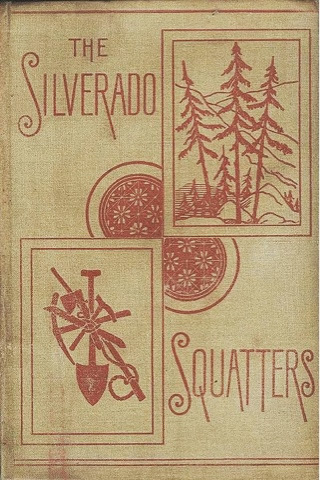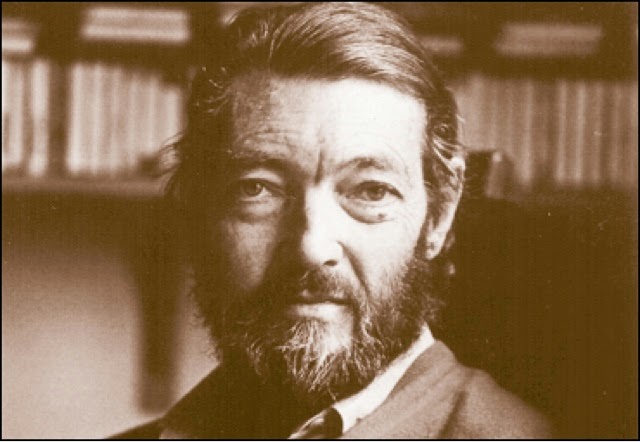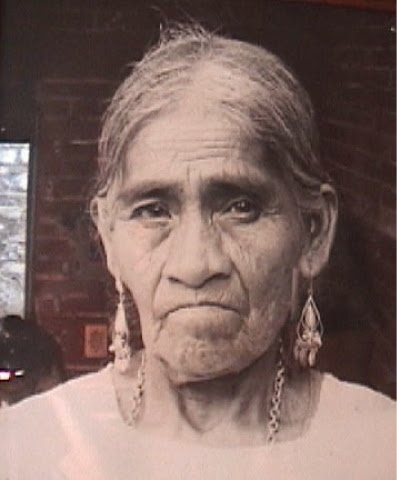MAELSTROM MUSIC
Things To Think
Sunday, July 7, 2013
Korea : Instrumental Music In The Classic Tradition
Rñyong San Ho-Sang | Ensemble Jong Nong Ak Oho
Ryong San Ho-Sang is track 2 on the disc "Corée : Musique instrumentale de la tradition classique / Korea : Instrumental Music In The Classic Tradition" Ocora label, released in 1988.
Etiquetas:music lighthouse
Ethnic music,
Instrumental Music,
Korea
Saturday, July 6, 2013
Robert Louis Stevenson - The Silverado Squatters (1883)
The Silverado Squatters (1883) is Robert Louis Stevenson's travel memoir of his two-month honeymoon trip with Fanny Vandegrift (and her son Lloyd Osbourne) to Napa Valley, California, in the late spring and early summer of 1880.
The Silverado Squatters provides some interesting views of California during the late 19th century. Stevenson uses the first telephone of his life. He meets a number of wine growers in Napa Valley, an enterprise he deemed "experimental", with growers sometimes even mislabeling the bottles as originating from Spain in order to sell their product to skeptical Americans. He visits the oldest wine grower in the valley, Jacob Schram, who had been experimenting for 18 years at his Schramsberg Winery, and had recently expanded the wine cellar in his backyard. Stevenson also visits a petrified forest owned by an old Swedish ex-sailor who had stumbled upon it while clearing farmland—the precise nature of the petrified forest remained for everyone a source of curiosity. Stevenson also details his encounters with a local Jewish merchant, whom he compares to a character in a Charles Dickens novel (probably Fagin from Oliver Twist), and portrays as happy-go-lucky but always scheming to earn a dollar. Like Dickens in American Notes (1842), Stevenson found the American habit of spitting on the floor hard to get used to.
His experiences at Silverado were recorded in a journal he called "Silverado Sketches", parts of which he incorporated into Silverado Squatters in 1883 while living in Bournemouth, England, with other tales appearing in "Essays of Travel" and "Across the Plains". Many of his notes on the scenery around him later provided much of the descriptive detail for Treasure Island (1883).
The Robert Louis Stevenson State Park now encompasses the area where the Stevensons stayed. The entrance to the park is at the summit of State Route 29. A new trail has been constructed in recent years. The "Silverado Museum" in St. Helena, California, is dedicated to Stevenson.
Book English or Pdf
Etiquetas:music lighthouse
book,
Los colonos de Silverado,
Robert Louis Stevenson,
The Silverado Squatters
Friday, July 5, 2013
Monteverdi - L'Orfeo, favola in musica (1607)
L'Orfeo, favola in musica, is a late Renaissance/early Baroque opera by Claudio Monteverdi, with a libretto by Alessandro Striggio. It is based on the Greek legend of Orpheus, and tells the story of his descent to Hades and his fruitless attempt to bring his dead bride Eurydice back to the living world. Written in 1607 for a court performance during the annual Carnival at Mantua, L'Orfeo is one of the earliest music dramas still regularly performed.
L' ORFEO: Favola in Musica (1607) - Claudio Monteverdi (1567 - 1643).
(Representación de Jordi Savall y La Capella Reial de Catalunya en el Gran Teatro del Liceo de Barcelona, 2002)
Etiquetas:music lighthouse
Claudio Monteverdi,
Documentary,
L'Orfeo,
music,
Savall,
score
Thursday, July 4, 2013
Great Mathematicians: Gödel, Nash, Wiles
Etiquetas:music lighthouse
Andrew Wiles,
Documentary,
Fermat,
Gödel,
John Nash
Wednesday, July 3, 2013
Florence Foster Jenkins, Soprano Singer
Florence Foster Jenkins- Der Holle Rache
From her recordings it is apparent that Jenkins had little sense of pitch and rhythm, and was barely capable of sustaining a note. Her accompanist can be heard making adjustments to compensate for her tempo variations and rhythmic mistakes. Her dubious diction, especially in foreign language songs, is also noteworthy. Nonetheless, she became popular for the amusement she provided. Critics often described her work in a backhanded way that may have served to pique public curiosity.
Despite her patent lack of ability, Jenkins apparently was firmly convinced of her greatness. She compared herself favorably to the renowned sopranos Frieda Hempel and Luisa Tetrazzini, and dismissed the abundant audience laughter during her performances as "professional jealousy." She was aware of her critics, but never let them stand in her way: "People may say I can't sing," she said, "but no one can ever say I didn't sing."
"Citizen Kane" (1941) Singing Lesson
Etiquetas:music lighthouse
Citizen Kane,
Florence Foster Jenkins,
music,
Soprano
Tuesday, July 2, 2013
Stravinsky - Rite Of Spring 100 years
Stravinsky Documentary
Stokowski in 'Accidental Stereo' (1929) - Stravinsky's 'Rite of Spring'. Philadelphia Orchestra
Etiquetas:music lighthouse
Documentary,
music,
Rite of Spring,
Sacre de la Pritemp,
Stravinsky
Monday, July 1, 2013
Julio Cortázar - The Island at Noon
The first time he saw the island, Marini was politely leaning over the seats on the left, adjusting a plastic table before setting a lunch tray down. The passenger had looked at him several times as he came and went with magazines or glasses of whisky; Marini lingered while he adjusted the table, wondering, bored, if it was worth responding to the passenger's insistent look, one American woman out of many, when in the blue oval of the window appeared the coast of the island, the golden strip of the beach, the hills that rose toward the desolate plateau. Correcting the faulty position of the bottle of beer, Marini smiled to the passenger. "The Greek islands," he said. "Oh yes, Greece," the American woman answered with false interest. A bell rang briefly, and the steward straightened up, without removing the professional smile from his thin lips. He began attending to a Syrian couple, who ordered tomato juice, but in the tail of the plane he gave himself a few seconds to look down again; the island was small and solitary, and the Aegean Sea surrounded it with an intense blue that exalted the curl of a dazzling and kind of petrified white, which down below could be foam breaking against reefs and coves. Marini saw that the deserted beaches ran north and west; the rest was the mountain which fell straight into the sea. A rocky and deserted island, although the lead-grey spot near the northern beach could be a house, perhaps a group of primitive houses. He started opening the can of juice, and when he had straightened up the island had vanished from the window; only the sea was left, an endless green horizon. He looked at his wristwatch without knowing why; it was exactly noon... (Follow)
Etiquetas:music lighthouse
book,
Julio Cortazar,
La isla a mediodia,
The Island At Noon
Saturday, June 29, 2013
Niger - Peuls Wodaabe Bororo - Gerewol Dance
Etiquetas:music lighthouse
Bororo,
Ethnic music,
Niger,
Wodaabe
Friday, June 28, 2013
Indispensable Two - Bill Evans &; Keith Jarrett
Etiquetas:music lighthouse
Bill Evans,
Keith Jarret
Thursday, June 27, 2013
Senancour - Obermann
Obermann, first published in 1804, is the best known work of French writer Étienne Pivert de Senancour. Usually described as an epistolary novel, the letters that constitute this volume are much closer to being a series of interlinked essays. Supposedly written by the melancholy recluse Obermann, whom critics have generally seen as a thinly disguised stand-in for Senancour himself, the letters contain the emotional outpourings of a man forever searching the depths of his innermost self in the hopes of overcoming his despair and finding a place for himself in the world, yet never quite succeeding. The letters cover a multitude of topics such as the hypocritical morals of the time, the failings of religion, the poor treatment of women in society, and the futility of existence. But while these writings are always overshadowed by an inescapable sense of brooding and pessimism, there are also passages that contain striking descriptions of Obermann’s Alpine refuge that are almost mystical in their sense of union with nature. The work is similar in some respects to Rousseau’s Reveries of the Solitary Walker, his Confessions, the Essays of Montaigne, and even to Thoreau’s Walden, yet it is wholly original in its form, and there is nothing else quite like it in the history of French literature. Though virtually unknown in America and largely forgotten in France, Obermann should nonetheless be seen as an essential text of early Romanticism whose rightful place is next to Goethe’s Sorrows of Young Werther and Chateaubriand’s René.
Book English
Wednesday, June 26, 2013
Danish Salad
Etiquetas:music lighthouse
Copenhagen Sketches,
Jesus Rueda Music,
piano
Post 100 - Petre Bellu - El defensor tiene la palabra (Apărarea arecuvântul) (The Defense Rests)
Etiquetas:music lighthouse
book,
El defensor tiene la palabra,
pdf,
Petre Bellu,
The defense rests
Tuesday, June 25, 2013
Mexico - María Sabina
On June 29, 1955, R. Gordon Wasson, then a vice president of the prestigious banking firm J.P. Morgan, together with his friend, New York fashion photographer Allan Richardson, made history by becoming the first whites to participate in a velada. The nocturnal mushroom ceremony took place in the remote village of Huautla de Jimenez, in the northeast region of Oaxaca, Mexico.
Under the guidance of the now famous Mazatec curandera Maria Sabina, Wasson and Richardson each consumed six pairs of the mushroom Psilocybe caerulescens var. mazatecorum. After an hour the two men began to feel the effects, which were manifest by visions of colorful geometric patterns, palaces, and architectural vistas.
Life magazine, as part of its "Great Adventures Series," published in its May 13th 1957 issue an account of this event titled, "Seeking the Magic Mushroom." This article, which inspired Dr. Timothy Leary and countless others to try the mushrooms, is considered by many to be the instrument that ushered in the "Psychedelic Revolution" of the 1960s.
Huautla de Jimenez would later become inundated with hippies hoping to "trip" with Maria Sabina. John Lennon, Peter Townshend, Mick Jagger, and Bob Dylan are some of the celebrities who traveled to Huautla, seeking the spiritual guidance of Maria Sabina. Although the Life article made Maria famous, it also brought her great suffering. Sadly, her home would later be burned and she was banished to the outskirts of town as punishment for divulging the Indians' age-old secret about their use of teonanacatl, or "God's Flesh." She never regretted having met Wasson, however, and felt that it was destiny.
She passed away on November 22nd 1985, and is now a legend in Mexico.
Etiquetas:music lighthouse
Documentary,
Ethnic music,
Maria Sabina,
Mexico
Monday, June 24, 2013
Medieval Spain 7 - The Mistery Play of Elche
The mystery play of Elche is a sacred musical drama of the death, the passage into heaven (known as the Assumption) and the crowning of the Virgin Mary. Since the mid-fifteenth century it has been performed in the Basilica of Santa Maria and in the streets of the old city of Elche, situated in the region of Valencia. It is a living testimony of European religious theatre of the Middle Ages and of the cult of the Virgin.
This theatrical performance, which is entirely sung, comprises two acts, performed on 14 and 15 August. These depict the death and crowning of the Virgin in a series of scenes and related paintings: the death of Mary, the night procession that is followed by hundreds of participants carrying candles, the morning procession, the afternoon funeral procession in the streets of Elche, and the enactment of the burial, Assumption and coronation in the Basilica. The texts are in Valencian, the local form of Catalan, with certain sections in Latin.The stage has two levels: the horizontal “terrestrial” stage and the vertical “celestial” stage, characteristic of the medieval mystery play. Ancient aerial machinery is used to enhance the spectacle by means of special effects.
More than 300 volunteers take part in the performance each year as actors, singers, stage directors, stagehands, tailors and stewards, as well as in the preparations that last throughout the year.This tradition, which attracts the entire population of the town, is closely linked to the cultural and linguistic identity of the inhabitants of the region.The mystery play of Elche was designated a “National Monument” in 1931 and is protected by several laws aimed at safeguarding cultural heritage.
Etiquetas:music lighthouse
el misterio de Elche,
Medieval Spain,
The Mistery Play of Elche
Subscribe to:
Posts (Atom)




















